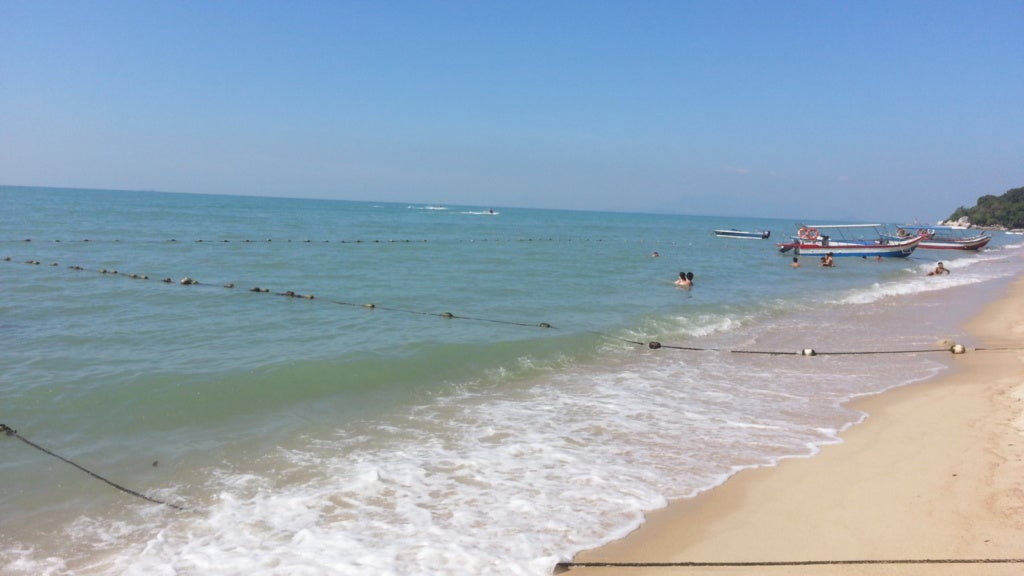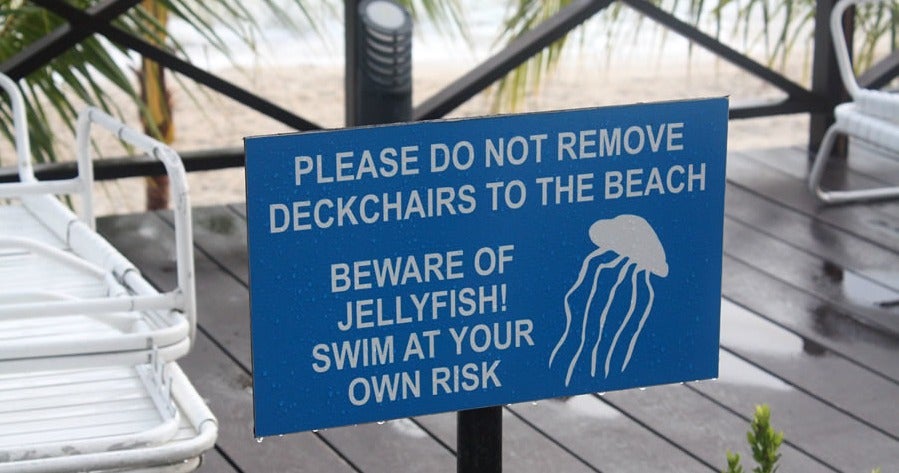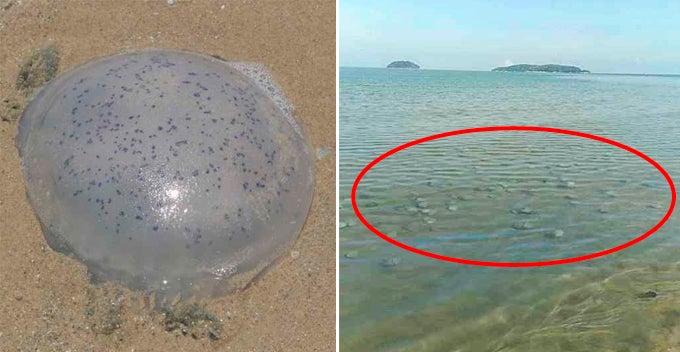A week ago, beach-goers were warned against swimming in Sabah beaches because jellyfish were said to have increased in number in the area. Similarly, The Star recently reported that the peninsula may experience a serious “jellyfish bloom” in May 2019 because of the heat and humidity which comes with the 2019 inter-monsoon period.
According to the Centre for Marine and Coastal Studies (Cemacs) director Prof Datuk Dr Aileen Tan Shau Hwai, the jellyfish bloom will occur in most parts of the Straits of Malacca, particularly the areas near coastal urban centres like Penang.

Source: The Star
Therefore, swimming during the jellyfish bloom is a big no-no if you want to avoid being stung. Dr Aileen also said that this is bad for the fish stock in floating aquaculture cages as jellyfish can kill them.
Not only that, jellyfish can congest fishermen’s nets and sting the fishermen when they pull in their nets from the sea. Thus, she warns that fishermen must be extra cautious during this period of time.

Source: Grandpacking
On top of that, the abundance of jellyfish can also obstruct the water intake pipes at coastal power plants. Dr Aileen was quoted as saying,
“Jellyfish blooms are still not fully understood but we do know they may be triggered by warming sea temperatures.”
She then added that the population of jellyfish spiked in March 2018 then peaked in April and May 2018. After that, it decreased in June 2018. Therefore, Dr Aileen has predicted that the invasion of the jellyfishes will happen again next month (May 2019). She further noted that the coastal waters of Sabah are already showing signs of a jellyfish invasion.
Dr Aileen reckoned that human pollution like treated sewage, which is rich in nitrates, makes the problem even worse. She explained that the “overly rich water bodies” which have a low dissolved oxygen levels will cause “dead zones with little fish and other marine life”. In these dead zones, jellyfish will grow and multiply very quickly.
To make matters even worse, this year’s weather will aggravate the low oxygen issue at sea. Dr Aileen further revealed that last year, the jellyfish near Penang’s shorelines almost doubled during neap tides, which means the high tides are a little lower than average and the low tides are little higher than normal.

Source: Flickr
Finally, she pointed out that the government can’t do much and it’s “everyone’s problem”. Hence, she urged everyone – including governments, academicians and industry leaders – to stop polluting the environment. Good advice!
So, remember to stay away from the beaches until the authorities announce that it’s safe to go there again. Don’t forget to share this article with your beach-bum friends.
Also read: More Jellyfish Spotted in Sabah, Beachgoers Warned That Dead Ones Can Still Release Venom









































